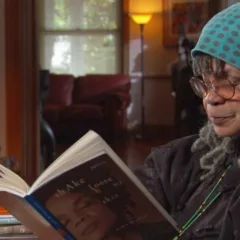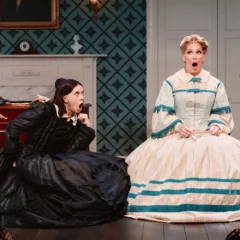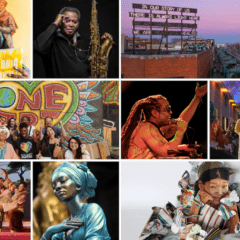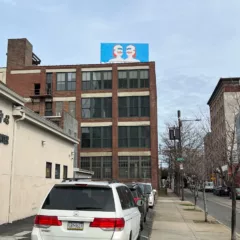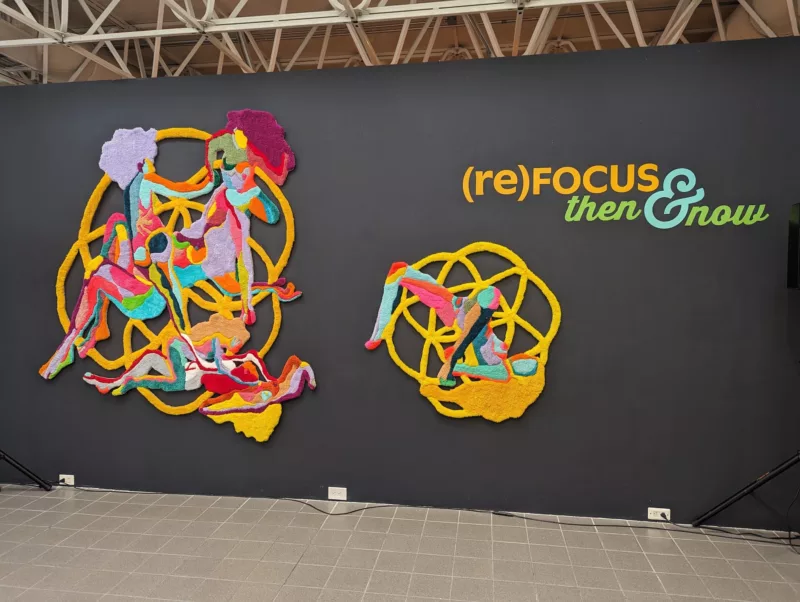
(re)FOCUS has taken over the Galleries at Moore College of Art and Design. Officially, the theme of (re)FOCUS: Then and Now is “Women in the Visual Arts”, but among the artists of “Now”, I noticed a couple of other standout themes.
[Time: Friday, Jan. 26, 3PM – opening of (re)FOCUS at the Galleries at Moore] As I am busily trying to put final touches on Now in the Rochelle R. Levy Gallery, and – in vain – trying to keep people OUT of the gallery, (did anyone see my giant “Do Not Enter” sign?) Joyce Kozloff, artist in the Then and one of the speakers for the (re)FOCUS panel, comes in, begging to take some photos before the panel starts and says something like “I think this show is much more exciting than the other show [(re)FOCUS:Then]”, to which I reply, “Well, it’s different.” And truly, it’s not that I didn’t want to tell her that I think that the Now show is much more exciting than the Then show because I didn’t want to hurt her feelings, but the brilliance of the juxtaposition of the two shows IS how different they are.
I had explained to one of my work study students that (re)FOCUS: Then is a redux of a show of 81 women artists that took place in 1974, and in 1974 it was kind of a big deal. Here in 2024 we’d all like to believe that women have come a long way in the last 50 years – and we have! – but then we hear statistics like how an estimated 64,000 pregnancies have resulted due to rape in states where abortion has been banned or nearly banned between July 1st of 2022 and January 1st of 2024. Three women presidents of Ivy League universities were recently grilled on their policy decisions regarding free speech on campus, and two of them were drummed out of office; regardless of what you think about the issue which was at hand (ceasefire NOW!), I do not believe that three male university presidents would have been treated the same. The list of regressive policies and events goes on and on. Point being, women are still fighting for the same equality of treatment and rights that we have been since 1974 and long, long before that.
I want to give huge props to Moore Galleries director Gabrielle Lavin Suzenksi for standing by her mission to highlight under-represented Philadelphia artists. Then contains so much work (78 pieces) that it could have easily taken over all gallery spaces at Moore, but instead, we get to see where we were Then, where we are Now, and look also into the Future.
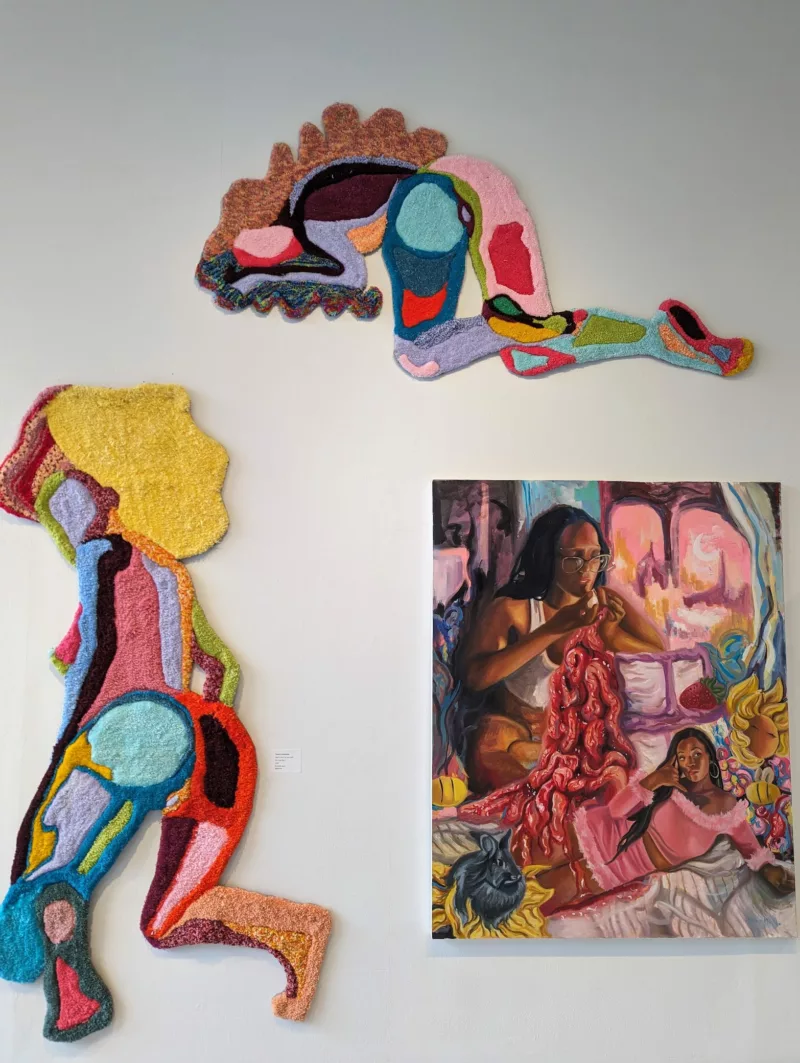
And left, “Didn’t I do it for you”. Right: D’Shon McCarthy, “The Last Supper”, oil on canvas. Photo by Katie Dillon Low
The Future is Us Collective is a young artist collective made up of Annais Delgado, Justin Keller, Ali Islam, Laila Islam, and Isa Matisse. Lead curator Isa Isioma Matisse organized and curated a show of works by artists from Philadelphia and elsewhere that largely, but not totally, identify somewhere along the queer spectrum.. As the show was going up in Wilson Gallery, every person who came in the front doors at Moore gasped and practically fainted as they shouted “The colors!” There is a pronounced and incredible vibrancy to the use of color in the show that knocks you back just a little as you visually and mentally enter the space. Tufted textiles by Traci Johnson could have been shown as rugs on the floor, but Isa decided to put them on the walls alongside large self portraits by D’Shon McCarthy and smaller, found-framed works by Mitch Weisen. There’s a really interesting theme that emerges throughout the show which I have been calling specters. There are a number of works that show spirits or bones that have separated from the corporeal body, figures reaching out to bodies that may or may not be there, bodies that are bordering real-or-mythical, and visual and written commentary about the comfort of the body one is in.
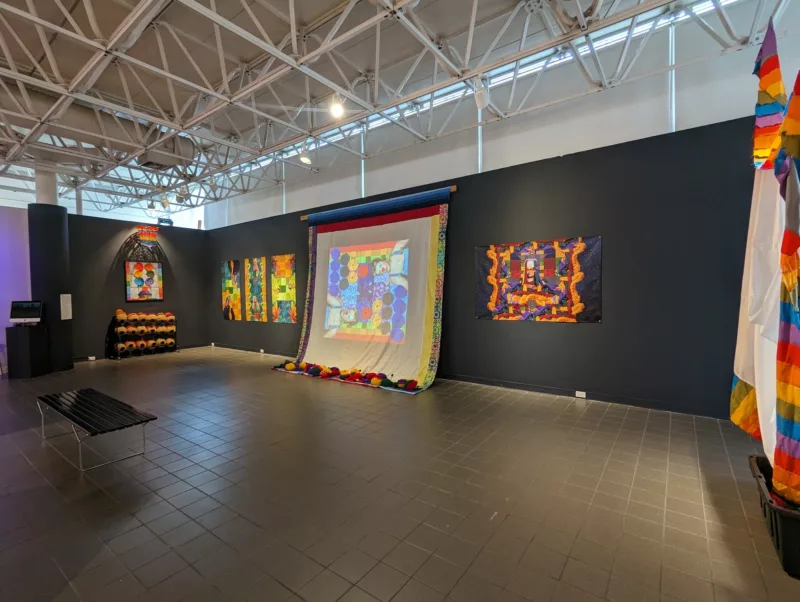
In Levy Gallery we find a group of artists who are a little bit older, and have used their work to find comfort and acceptance in their bodies and the bodies of others. Headliner Wit López spent much of their life hiding their facial intersex characteristics, until they found a way to embrace them. Their self-portraiture work is a visual commentary on their gender identity as shown through a series of photographs, quilts, and knitted sculptures–skills they say they learned through their parents of African American and Puerto Rican heritage. It must be a joy to be Wit López. They almost never stop laughing, and their work quietly expresses their humor with silly faces and sculptures that are usually meant to be tossed about – but please – no slam dunking in the gallery.
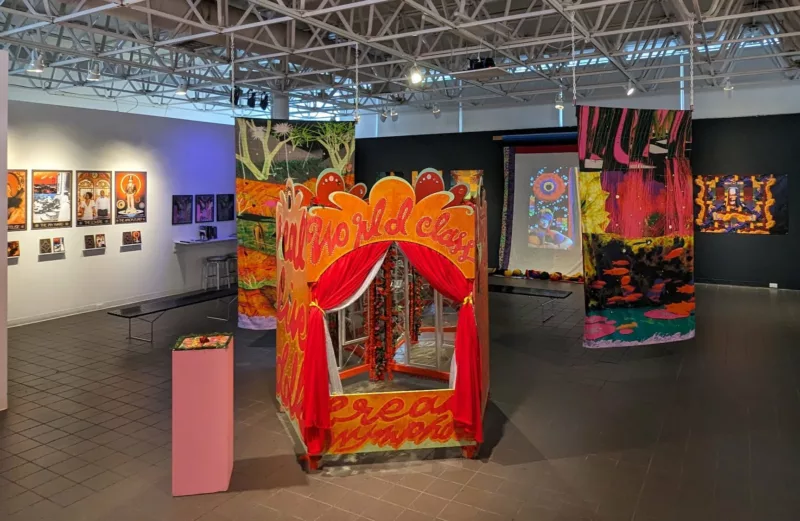
Eva Wu’s interactive work “Infinite Peep” is at the front-center of the gallery. Viewers are invited to perform inside the structure for voyeurs who may watch through peep holes on the outside- but only if they put a token in the slot as payment! Backgrounded by 2 hanging textile works, and opposite a Barbie-pink painted wall showcasing a range of small works and lenticulars, the view into the gallery has a carnival feel to it. Eva presents us the joy of bodies and bodies next to bodies (maybe it’s also a joy to be Eva Wu?) with sex-positive imagery.
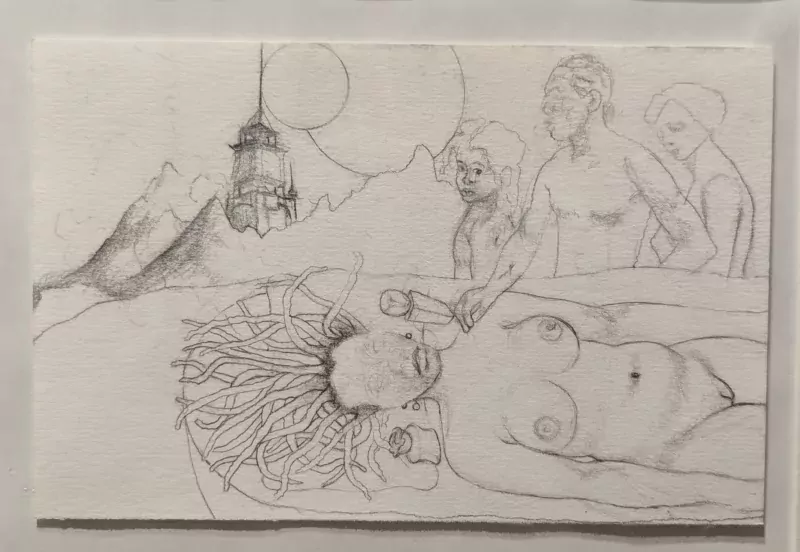
Atisha Fordyce presents a group of portrait paintings and drawings. They feel like a visitation, perhaps to the home of the people pictured. Atisha says that her work “honors leisure”, which I think is another thing that bodies, especially Black bodies, have to work to find comfort in.
Bringing us back to the future, Li Sumpter shows a group of Afrofuturist objects and images that represent her practice as a mythologist in several other recent projects. A video slot machine whirls and plays in one corner, next to a series of oracle cards featuring Black guides. As a researcher, it was also important to her to present some of the original source material or inspiration for her practice which viewers may sit and browse through under the black-lit book-cover posters for W.E.B. Dubois’ “The Comet”.
The scope of the extensive group of shows at Moore left me feeling so proud of these contemporary women, non binary, and trans artists — like, despite all the ways ingrained sexism, racism, and otherism keeps trying to suppress the infinite possibilities that we KNOW exist, when someone allows the lid to come off and decides to celebrate true diversity, it’s such a good feeling. We have to thank a group of women who decided 50 years ago that they weren’t going to stay in the box for being some of the many forbears of this movement.
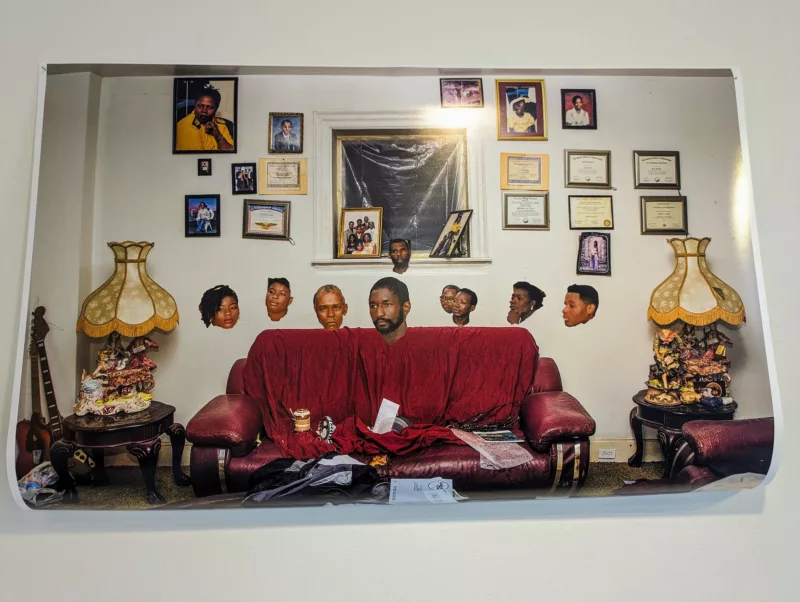
You have until March 16th to get yourself to this must-see exhibition. It’s an incredible bang for your buck because it’s always free! Keep your eyes peeled for related programming to take place in the Galleries.
PS: Do NOT miss Naomieh Jovin in the Alumni Gallery at Moore. Her deeply psychological photos may at-first appear to be mundane domestic scenes, but do not walk away before you really get into them. The scattered presentation alludes to one of Jovin’s living room scenes, with family photos carelessly tacked to the wall; but they’re really a deep history of the generational trauma that the artist sees in her Haitian family.
Read Susan Isaac’s Artblog interview with the (re)FOCUS organizers, Judith Brodsky and Diane Burko.
Read more articles by Katie Dillon Low.
(re)FOCUS: Then and Now, until March 16, 2024. Galleries at Moore College of Art and Design


